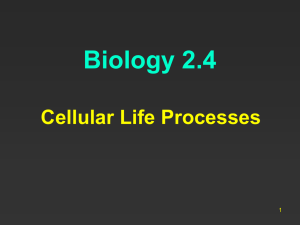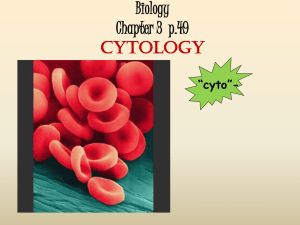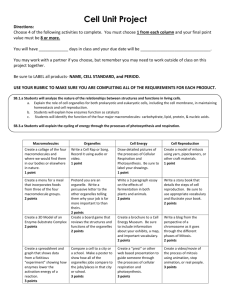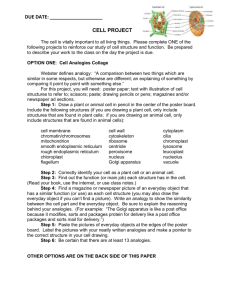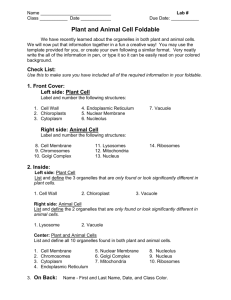Directions - White Plains Public Schools
advertisement
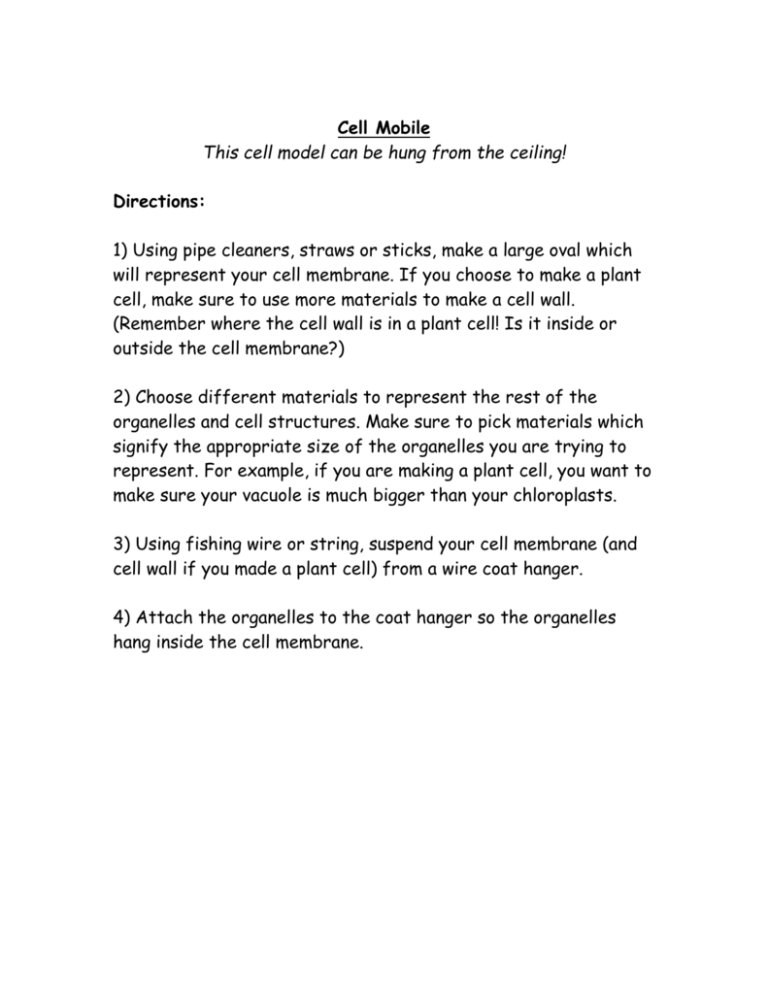
Cell Mobile This cell model can be hung from the ceiling! Directions: 1) Using pipe cleaners, straws or sticks, make a large oval which will represent your cell membrane. If you choose to make a plant cell, make sure to use more materials to make a cell wall. (Remember where the cell wall is in a plant cell! Is it inside or outside the cell membrane?) 2) Choose different materials to represent the rest of the organelles and cell structures. Make sure to pick materials which signify the appropriate size of the organelles you are trying to represent. For example, if you are making a plant cell, you want to make sure your vacuole is much bigger than your chloroplasts. 3) Using fishing wire or string, suspend your cell membrane (and cell wall if you made a plant cell) from a wire coat hanger. 4) Attach the organelles to the coat hanger so the organelles hang inside the cell membrane. Clay Cell Directions: 1) On a piece of plastic wrap, flatten out a large piece of clay. If you are making a plant cell, place a piece of aluminum foil outside the plastic wrap to represent a cell wall. 2) Choose different materials to represent the rest of the organelles and cell structures. Make sure to pick materials which signify the appropriate size of the organelles you are trying to represent. For example, if you are making a plant cell, you want to make sure your vacuole is much bigger than your chloroplasts. 3) Place the organelles in the clay in the appropriate places. 4) Carefully cup the plastic wrap and clay so that a ball is formed. If you are making a plant cell, try to make a rectangular shape. Be careful not to squish the clay too much or you might damage the organelles inside. 5) Give the closed cell model to Mrs. Levin, or a parent/guardian so it can be cut in half, showing what the inside of a cell might look like. The Incredible, Edible Cell Directions: 1) A: If making a plant cell, place a plastic food storage bag inside a clear, flat, rectangle-shaped Tupperware container. B: If making an animal cell, place a Ziploc food storage bag on the table. 2) Choose different, edible materials to represent the rest of the organelles and cell structures (M&M’s, marshmallows, fruit pieces, etc.). Make sure to pick materials which signify the appropriate size of the organelles you are trying to represent. For example, if you are making a plant cell, you want to make sure your vacuole is much bigger than your chloroplasts. 3) Follow the directions on the gelatin box to make gelatin mix. 4) Pour the gelatin mix into plastic bags so they are almost filled. (Don’t overfill the bag because then you will make a BIG mess!) 5) Add the organelles to the gelatin. 6) Place the cell in the refrigerator so the gelatin can solidify. 7) Return the cell to Mrs. Levin so she can enjoy it with her lunch . OK… Bring it back to school to share with your class. (***Note: Extra credit will be given for making a GIGANTIC edible cell that can be eaten by the whole class! You could use a big pan instead of Tupperware and a small garbage bag instead of a food storage bag.) Shoe Box Cell Directions: 1) This model is only appropriate for a plant cell. 2) Obtain a shoe box to create a plant cell model that looks like a diorama. 3) Create a cell membrane since the shoe box itself will only represent the cell wall. 4) Choose different materials to represent the rest of the organelles and cell structures. Make sure to pick materials which signify the appropriate size of the organelles you are trying to represent. For example, if you are making a plant cell, you want to make sure your vacuole is much bigger than your chloroplasts. 5) Poke holes in one side of the shoe box and hang organelles from the shoe box wall.

